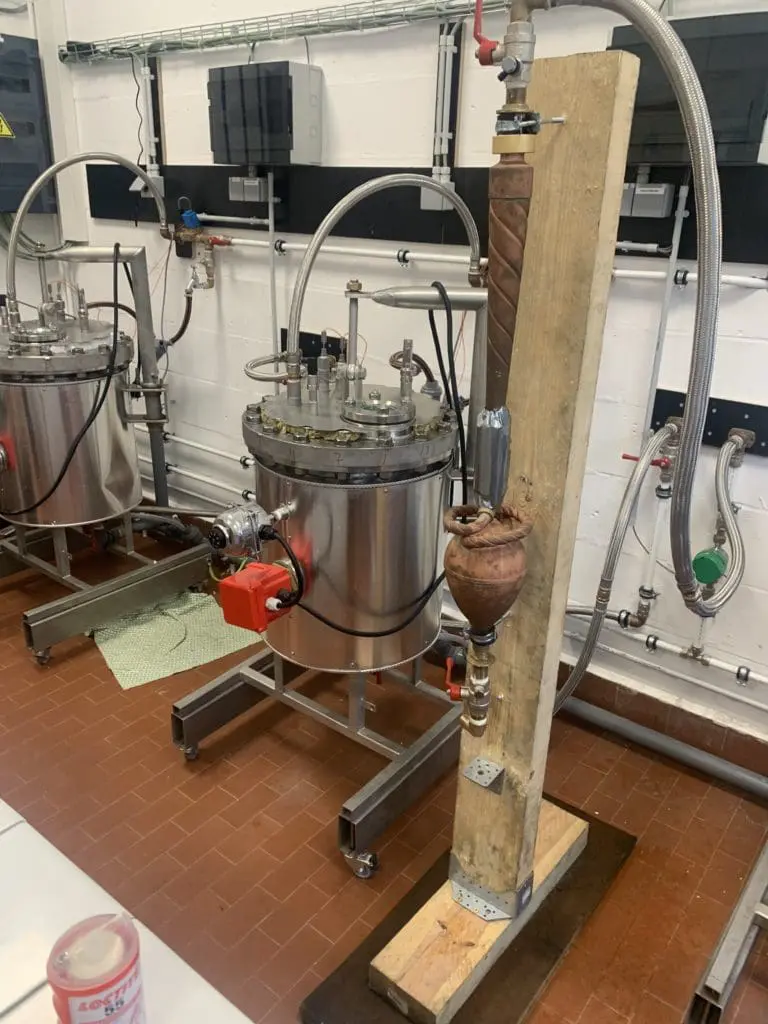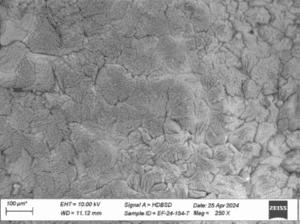1/ Kettle test (October 2023): Water heated to 60°C & 90°C in identical containers and visual observation of the difference in crystalline structure of the limestone which floats on the surface of the water.
- Limescale in non-dynamized tap water aggregates into limestone clusters (which clump together) suspended on the water, distributed sparsely over the surface of the water.
- Limescale in dynamized tap water appears in the form of a fine sprayed film suspended on the water, distributed over the entire surface of the water.




2/ Pan test (October 2023): Water heated at 60°C & 90°C in identical pans and visual observation of the difference in crystal structure:
- Limescale in non-dynamized tap water is suspended sparsely on the surface of the water where it aggregates (transparent water); after evaporation, it settles at the bottom of the pan on a more concentrated surface, being stickier and encrusting.
- The limescale in dynamized tap water which is in suspension is distributed over the entire surface of the water and also dissolved in the water (more opaque water), it has a finer and pulverized structure; after evaporation, it settles at the bottom of the pan, spreading over a larger surface and having a silkier texture (like a fine white powder), less encrusting, which makes it easier to remove.




3/ Buildwise test (March 2024)
Observation of the difference in the quantity of limescale in a boiler/water heater (open circuit: 10 liters taken every 30 minutes) set at 75°C for 30 days (01/11/2024 to 03/08/2024) in tap water (30°F), dynamized >< non-dynamized ; Evacode CC procedure CCN/PN/NBN-917. (see full Buildwise report hereunder)
Observation :
In the boiler containing dynamized water there is 12% less quantity of limescale deposits (bottom of the boiler and electrical resistances) because this limescale has been pulverized and has therefore been more easily evacuated:
- The mass of scale remaining around the resistances and at the bottom of the boiler decreases
- The Biodynamizer has an effective capacity to reduce the formation of limescale deposits

4/ Buildwise test (March 2024)
Observation of the difference in mineralogical structure of the scale (morphology and arrangement) formed and remaining in 2 boilers, one of which contains dynamized water and the other non-dynamized water; Scanning electron microscope (SEM) analysis with EDS (“Energy Dispersive X-ray Spectroscopy”); internal procedures SP/MIC/6.05 based on NBN EN 12326-2 (2010) and SP/MIC/6.07 (see full Buildwise report hereunder)
Observation :
“the crystals observed on the scale coming from the installation treated with the Biodynamizer seem locally a little more fragmented and show a slightly more chaotic arrangement” (the limescale in non-dynamized water appears indeed more in the form of platelets in packets than that of the limestone in dynamized water which appears more in the form of a “cauliflower“)

Limescale in non-dynamized water

Limescale in non-dynamized water





